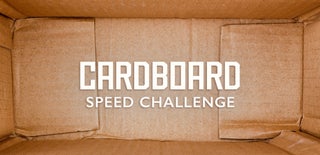Introduction: Turn Toilet Rolls Into Construction Toys
I'm sure I'm not the only one with a large supply of hoarded toilet roll tubes in a scrap box somewhere waiting for the day when they might 'come in handy'.
Well now they can be anything you like!
These 3D printed connectors transform cardboard tubes into modular construction toys to be assembled into forts, robots or cities to be destroyed monster-style.
Supplies
- 3D Printer
- Toilet Rolls
- Hot Glue gun
Step 1: Designing a Modular System
For easier printing, I separated the connectors (grey) and the end pieces (blue) that grip inside the toilet rolls into separate parts.
The toilet rolls I have measure about 40mm in diameter and 100mm long. The length shouldn't matter as long as they are all the same, but the width is important to the design of the corners so the end pieces don't overlap.
The end pieces are the same distance from the centre of the connector in every configuration, meaning that structures built with them will be modular and always able to connect in a neat grid.
Step 2: Files
There are 8 connectors and one end piece.
By combining these, it should be possible to make any rectangular structure.
Step 3: Printing the Pieces
The print settings I used were:
10% infill
Layer height 0.15mm
Support touching buildplate
A brim for build plate adhesion
Step 4: Construction
Use a hot glue gun to attach the end pieces to the connectors.
Squeeze the ends together gently to insert into a toilet roll and it should hold firmly.
Step 5: Build!
Go forth and create cardboard tube empires!
Your only limit is your imagination (and square corners)!

Judges Prize in the
Cardboard Speed Challenge






















